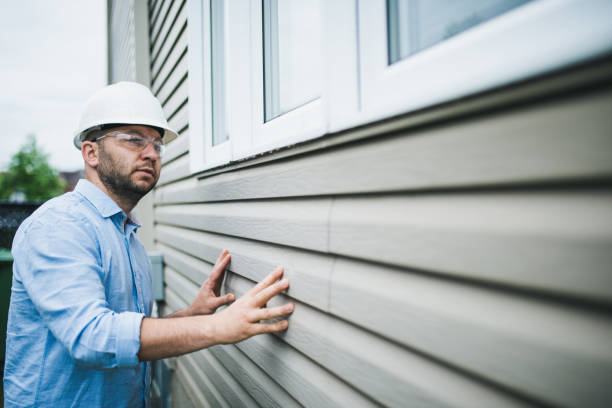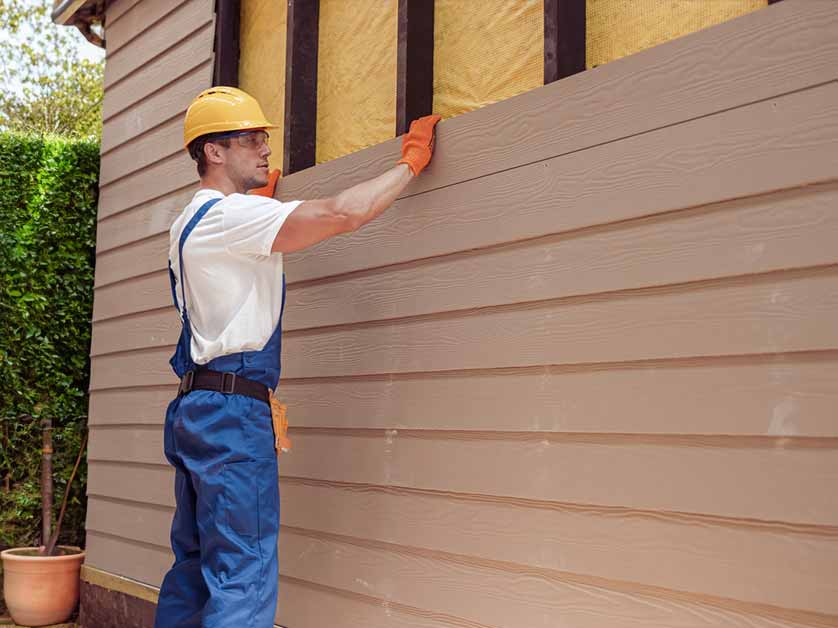The Crucial Guide to the Numerous Sorts Of Home Siding and Their Unique Benefits
In the realm of home renovation, selecting the ideal siding is a critical decision that affects both visual appeal and functional performance. The variety of materials offered, such as timber, vinyl, fiber steel, brick, and cement, each offer special advantages that satisfy various requirements and preferences. Comprehending these differences can significantly improve the long life and worth of a building - morris siding contractor. With so several options to consider, which siding material truly stands out for your details job? Checking out these options can result in notified decisions that align with both design and practicality.
Wood Exterior Siding
Wood house siding, a prominent option for residential outsides, supplies an ageless aesthetic that combines natural charm with structural integrity. This house siding material is readily available in numerous styles, consisting of clapboard, roof shingles, and board-and-batten, allowing property owners to tailor their appearance to match their layout preferences. Timber home siding is typically crafted from durable varieties such as cedar, redwood, or yearn, which are recognized for their durability and ability to endure environmental stress factors.
One of the key benefits of timber exterior siding is its outstanding insulation buildings, which can add to power effectiveness and reduced heating prices. Furthermore, wood home siding is biodegradable, making it an ecologically friendly choice when sourced sustainably. Normal upkeep, including paint or discoloration, can prolong its lifespan and enhance its look, allowing home owners to preserve the natural appeal of the timber.
However, prospective downsides include vulnerability to bugs, rot, and weather damages, demanding ample therapy and upkeep - morris siding contractor. Regardless of these issues, when effectively looked after, wood siding can give a durable and beautiful option that improves the character of a home while providing a cozy, welcoming environment

Vinyl Siding
Vinyl siding has actually arised as a leading choice for home owners seeking a low-maintenance outside alternative that combines resilience and price. This flexible product is crafted from polyvinyl chloride (PVC), making it immune to numerous weather, including dampness and UV rays. Because of this, plastic house siding does not warp, rot, or fade, making certain durable aesthetic charm.
Among the primary benefits of vinyl siding is its considerable series of shades and designs, permitting property owners to achieve the desired search for their residential or commercial property without the demand for regular repainting. Additionally, plastic house siding is simple to set up, which can dramatically decrease labor costs throughout building or renovation tasks.
Vinyl home siding also contributes to power efficiency. Numerous choices attribute insulation support, which enhances thermal efficiency, helping to preserve comfortable indoor temperatures and potentially decreasing energy expenses. Furthermore, its smooth surface helps with simple cleansing, needing just routine cleaning with a yard tube to eliminate dust and particles.
Fiber Concrete Exterior Siding
Fiber cement exterior siding has acquired grip among contractors and home owners alike because of its exceptional combination of sturdiness and aesthetic flexibility. Composed of a blend of cellulose, sand, and concrete fibers, this exterior siding option is engineered to endure extreme climate problems, consisting of high winds, heavy rain, and temperature level variations, making it a durable option for residential exteriors.

Among the primary advantages of fiber cement exterior siding is its resistance to bugs, such as termites, and its non-combustible nature, offering improved fire safety. morris siding contractor. Furthermore, it is readily available in a wide variety of styles, colors, and structures, enabling home owners to accomplish their wanted visual without compromising efficiency
An additional advantage is its low upkeep needs; fiber cement home siding usually requires painting or discoloration every 5-10 years, which is much less frequent than other materials. Its durability adds to a reduced general price of possession, as it lowers the requirement for regular repair services or replacements.
Ultimately, fiber cement exterior siding stands for an exceptional investment for those looking for a durable, eye-catching, and versatile exterior choice, integrating both type and feature to boost the home's aesthetic allure.
Steel Exterior Siding
The allure of steel house siding hinges on its robust her latest blog durability and contemporary visual appeal, making it a preferred choice for modern style. Offered in materials such as aluminum and steel, steel siding offers a series of shades and surfaces, allowing homeowners to achieve a tailored appearance that enhances their layout vision.

Power efficiency is another significant advantage, as many metal exterior siding products are created with insulation alternatives that aid manage interior temperature levels. This can cause minimized energy expenses gradually. Furthermore, steel home siding is commonly recyclable, making it an eco-friendly option for sustainability-minded home owners.
The setup process for steel home siding can be fairly straightforward, resulting in a quicker turn-around time for building jobs. In general, metal house siding incorporates performance and style, making it a practical choice for those looking for a enduring and visually enticing outside surface.
Brick and Stone House Siding
Block and stone siding stands out as a classic option that enhances the visual appeal of any home. Recognized for their longevity and reduced maintenance, these products provide an exceptional return on investment while raising the property's visual appeal. Offered in numerous colors, appearances, and patterns, brick and rock can be tailored to match diverse building designs, from typical to modern-day.
One of the key benefits of brick and stone house siding is their power effectiveness. Both products have natural insulating residential or commercial properties that assist manage indoor temperatures, possibly lowering heating & cooling expenses. In addition, they provide remarkable fire resistance contrasted to other siding options, contributing to improved safety.
Another benefit is their longevity. Block and rock can last for decades, commonly needing marginal maintenance beyond occasional cleansing. Unlike timber home siding, they are impervious to insects and rot, guaranteeing a durable outside that endures the elements.
Final Thought
In recap, the selection of exterior siding considerably influences a home's aesthetic appeal, energy efficiency, and upkeep requirements. Each kind of exterior siding-- whether timber, vinyl, fiber brick, view cement, or steel and stone-- supplies distinct advantages tailored to numerous house owner choices and environmental problems.
One of the primary advantages of wood house siding is visit their website its outstanding insulation buildings, which can contribute to power efficiency and reduced home heating costs. Furthermore, timber exterior siding is eco-friendly, making it an environmentally pleasant option when sourced sustainably.One of the main advantages of steel exterior siding is its resistance to different environmental elements.Energy performance is another considerable benefit, as several metal exterior siding items are made with insulation alternatives that assist manage interior temperature levels. Each type of exterior siding-- whether wood, plastic, fiber block, concrete, or steel and rock-- uses special advantages customized to various house owner choices and ecological conditions.